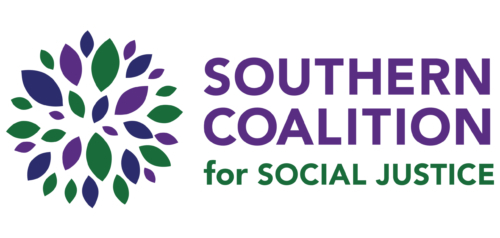*Originally published in the News & Observer
Incidents of school crime and violence, short- and long-term suspensions, alternative learning program placements and corporal punishment were all down last school year. The Department of Public Instruction and school districts have been quick to tout the progress. Teachers and administrators deserve praise for keeping more students in school and out of the school-to-prison pipeline.
However, five serious concerns deserve attention from education administrators, policymakers and lawmakers.
1) Too many students are still being pushed out of school. During 2013-14, North Carolina K-12 public schools handed out 198,254 short-term suspensions, 1,088 long-term suspensions and 37 expulsions. Students missed over 650,000 school days because of out-of-school suspension. Research shows that these students face an increased risk of academic, psychological and behavioral problems, and that suspension brings only negligible benefit to the classroom environment.
2) The harshest forms of discipline are disproportionately meted out. Last year, African-American students comprised 26 percent of the student population, but received 58 percent of disciplinary reassignments to ALPs, 58 percent of short-term suspensions, 57 percent of long-term suspensions and 64 percent of expulsions. Bias, whether implicit or explicit, is at work. In many cases, African-American students receive harsher punishments for committing the same infractions as their white peers. Students with disabilities were similarly disproportionately pushed out of their schools.
3) Certain schools and districts deserve close scrutiny for their harmful practices. Wake County retained its position as the leader in long-term suspensions. It had 10 percent of the state’s public school students but gave out 25 percent of its long-term suspensions. Anson, Halifax, Lenoir, Robeson, Thomasville City and Whiteville City schools consistently rank among the districts with the highest high school short-term suspension rates. Crossroads Charter High School in Charlotte continued to suspend students at a shocking rate: 25.5 short-term suspensions for every 10 students – 13.4 times greater than the statewide average.
4) DPI reports reveal that there were 13,944 full-day placements in in-school suspension and 12,403 placements in ALPs last year. There’s little to no data or evaluation of ISS, yet anecdotally we know that ISS commonly operates as a holding pen where students often are supervised by unqualified staff and receive little meaningful instruction. Further, data show that ALPs are segregated and low performing and have high suspension rates. For example, Lakeview School in Durham had a student population nearly entirely economically disadvantaged and 83 percent African-American in a school district in which the African-American population was 50 percent. Over 95 percent of students failed end-of-grade exams, and over 85 percent failed end-of-course exams. The short-term suspension rate was 28.4 for every 10 students.
5) Five school districts still employ corporal punishment. These districts – Graham, Macon, Onslow, Robeson and Swain – are out of step with the positions of the N.C. State Board of Education, Association of Educators and Parent Teacher Association. Hitting students is an ineffective form of discipline. It does not improve educational performance, negatively affects students’ social, psychological and educational development and promotes violent attitudes in youth.
The state faces other grave school discipline problems that DPI doesn’t even mention in its annual reports. For example, the number of law enforcement officers working full time in schools – known as school resource officers or SROs – has increased by approximately 476 percent over the last two decades. Consequently, 45 percent of delinquency complaints are now school-based. Last school year, over 93 percent of the school-based delinquency complaints were for misdemeanors (compared with 66 percent for nonschool-based complaints) and 53 percent were filed against African-American students. The huge growth in SROs comes against a backdrop of cuts in funding for guidance counselors, social workers and psychologists. We are policing and punishing where we should prevent and treat.
How can political leaders and school districts continue the positive trends highlighted in the reports, accelerate the pace of change and address remaining problems? The General Assembly must stop starving schools of resources and provide adequate funding for alternatives to suspension focused on preventing misbehavior and intervening appropriately when it occurs: small class sizes, support staff, Positive Behavioral Interventions and Supports and restorative justice. School districts must improve staff training and student codes of conduct and limit the instances in which SROs can send youths to juvenile and criminal court.
If these measures are implemented, we’ll have even more reason to celebrate next year.
Jason Langberg and Barbara Fedders are on the Advisory Board of Youth Justice North Carolina
